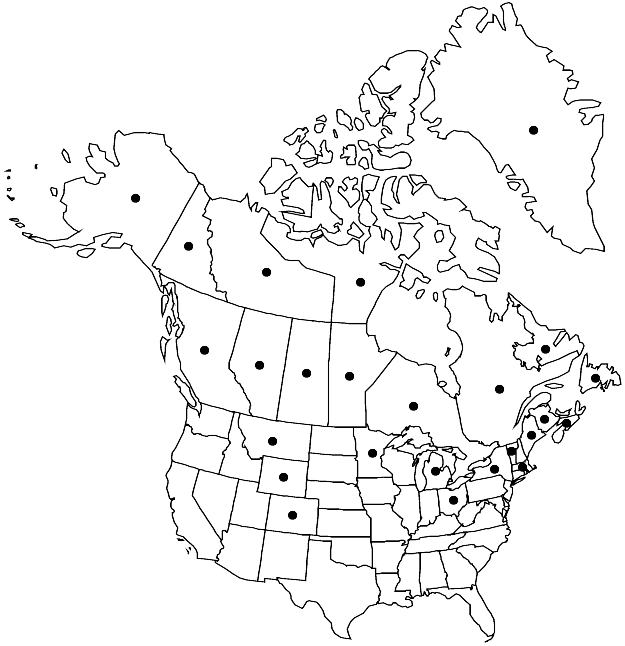Pseudocalliergon turgescens
Hedwigia 46: 311. 1907.
Plants large, rarely medium-sized, turgid, with golden gloss when dry. Stems slightly and irregularly branched. Stem-leaves imbricate or sometimes ± spreading, straight, ovate or broadly ovate, suddenly narrowed to apex; margins entire or occasionally partly very finely denticulate; apex broadly obtuse or rounded, short-apiculate, strongly concave; costa double, to 1/5–2/5 leaf length, rarely single and slightly longer; alar cells quadrate or rectangular, slightly inflated, walls incrassate or strongly so, region transversely triangular; distal laminal cells smooth. Perichaetia with inner leaves gradually or suddenly narrowed to apex, apex short-acuminate. Capsule horizontal to inclined.
Habitat: Open, non-forested areas, lime-rich wetland habitats, small fens, small depressions in soil or on flat limestone rock, along rills or on rock flushed with calcium-rich water, submerged in small lakes or pools
Elevation: low to high elevations
Distribution

Greenland, Alta., B.C., Man., N.B., Nfld. and Labr., N.W.T., N.S., Nunavut, Ont., Que., Sask., Yukon, Alaska, Colo., Maine, Mass., Mich., Minn., Mont., N.Y., Ohio, Vt., Wyo., South America (Bolivia), South America (Peru), Eurasia, Africa
Discussion
Pseudocalliergon turgescens is easily distinguished by the rather robust and usually weakly branched shoots, with straight, imbricate or sometimes slightly spreading, ovate or broadly ovate, apiculate and strongly concave leaves. Except in protected, shaded habitats, the plants have mostly a yellow or yellow-brown color. The species is often propagated vegetatively by easily detached shoot apices. Pseudocalliergon turgescens is rather frequently confused with Scorpidium scorpioides (Calliergonaceae), especially the straight-leaved phenotypes of the latter; the two are easily separated by the many small and incrassate alar cells that form indistinctly delimited alar regions and complete lack of stem hyalodermis in P. turgescens, versus the few, inflated and thin-walled alar cells in sharply delimited groups and presence of at least a partial stem hyalodermis in S. scorpioides. Scorpidium scorpioides often has red colors; this is never the case in P. turgescens.
Selected References
None.
Lower Taxa
"single" is not a number."narrower" is not a number.